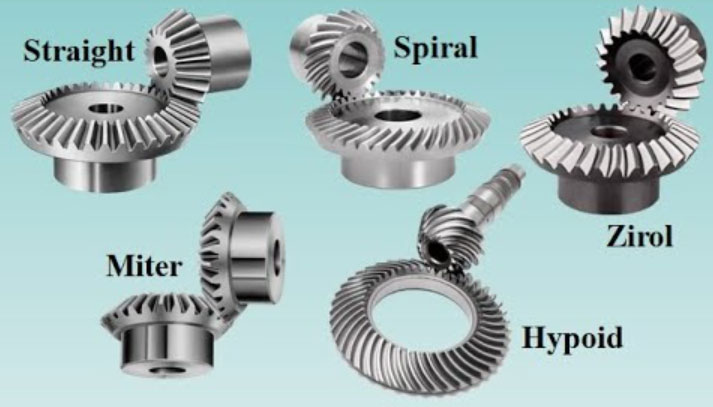Bevel gears are a particular type of gear that enables power transmission between two intersecting or crossed shafts. The unique design and functionality of bevel gears make them a fundamental component in numerous mechanical devices. This article delves into the design specifics and functional attributes of bevel gears.

Design of Bevel Gears
Bevel gears are characterized by their conical shape, and the teeth are often cut on the conical surface. The two key components of bevel gears are the “pitch cone” and the “pitch point.” The pitch cone refers to the imaginary cone that would coincide with the actual gear if it were extended, while the pitch point refers to the point where two pitch cones of a pair of bevel gears would intersect.
There are three main types of bevel gears, each with a unique tooth design:
- Straight Bevel Gears: In these gears, the teeth are straight and run toward the gear’s apex. They are the simplest type of bevel gears and are often used in devices where the direction change needs to be more abrupt rather than smooth.
- Spiral Bevel Gears: These gears have teeth that are curved and oblique. This allows for more gradual engagement of the teeth during operation, providing smoother and quieter functioning. These are commonly used in automotive differentials.
- Hypoid Bevel Gears: These gears have a similar design to spiral bevel gears, but the pitch surfaces are hyperboloids rather than cones and the gear pairs allow for shafts to be offset from one another. They are typically used in automotive applications where the drive shaft must be at a right angle to the driven shaft but not intersect with it.
Functionality of Bevel Gears
The primary function of bevel gears is to change the axis of rotation, usually by 90 degrees, although other angles are also possible. This change can occur between two intersecting or crossing shafts.
Apart from changing the direction of power transmission, bevel gears also serve the purpose of changing the drive’s speed and torque. By adjusting the number and size of teeth on each gear, it’s possible to control the speed and torque relationship between the input and output shafts.
The specific design and arrangement of bevel gears can significantly impact their operation. For instance, spiral bevel gears provide smoother and quieter operation due to gradual tooth engagement, which is particularly beneficial in applications such as automotive differentials.
In conclusion, the design and functionality of bevel gears make them versatile and critical components in mechanical systems. Understanding these factors can assist in the proper selection and application of bevel gears, ensuring optimal performance and longevity.
